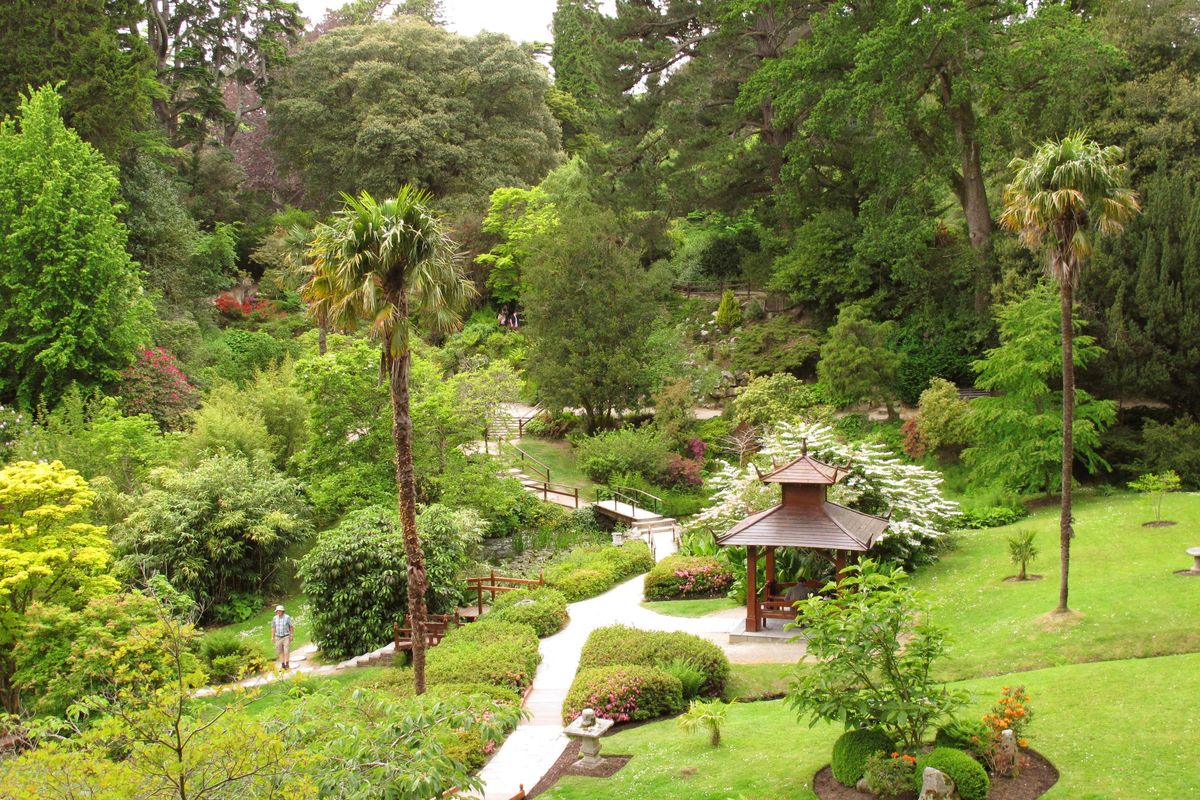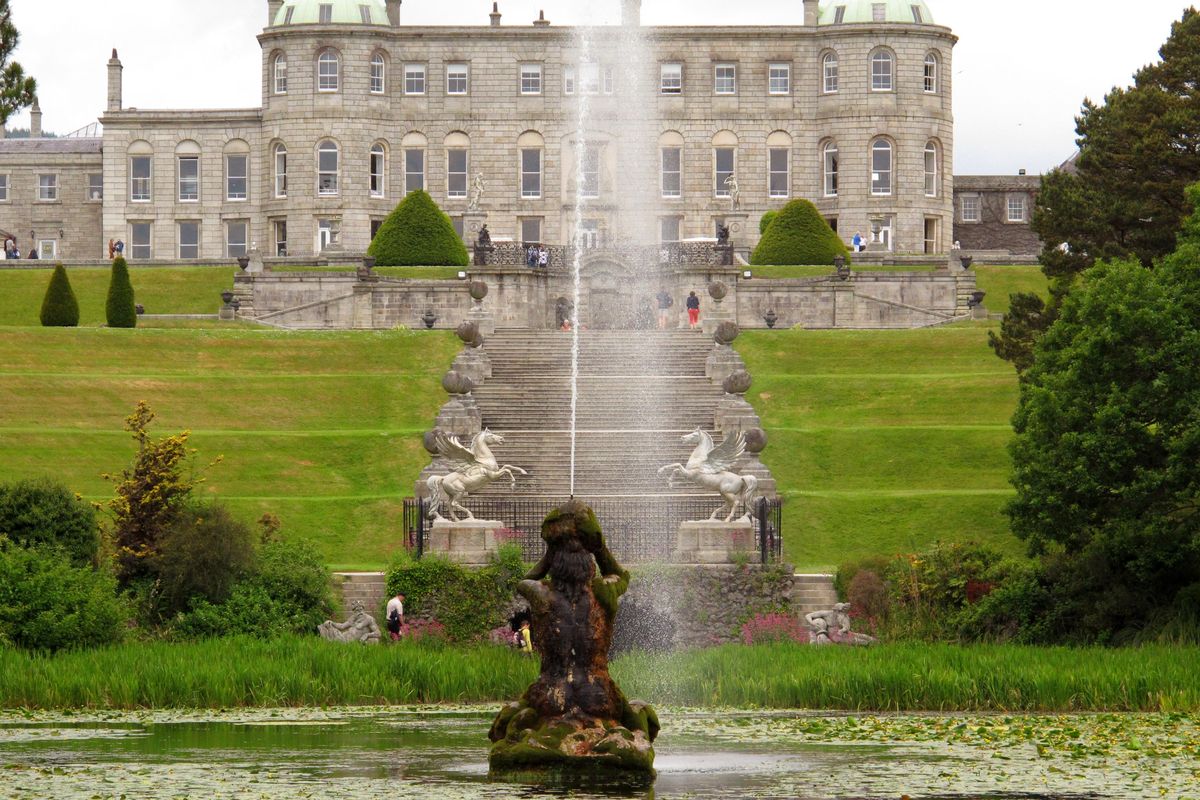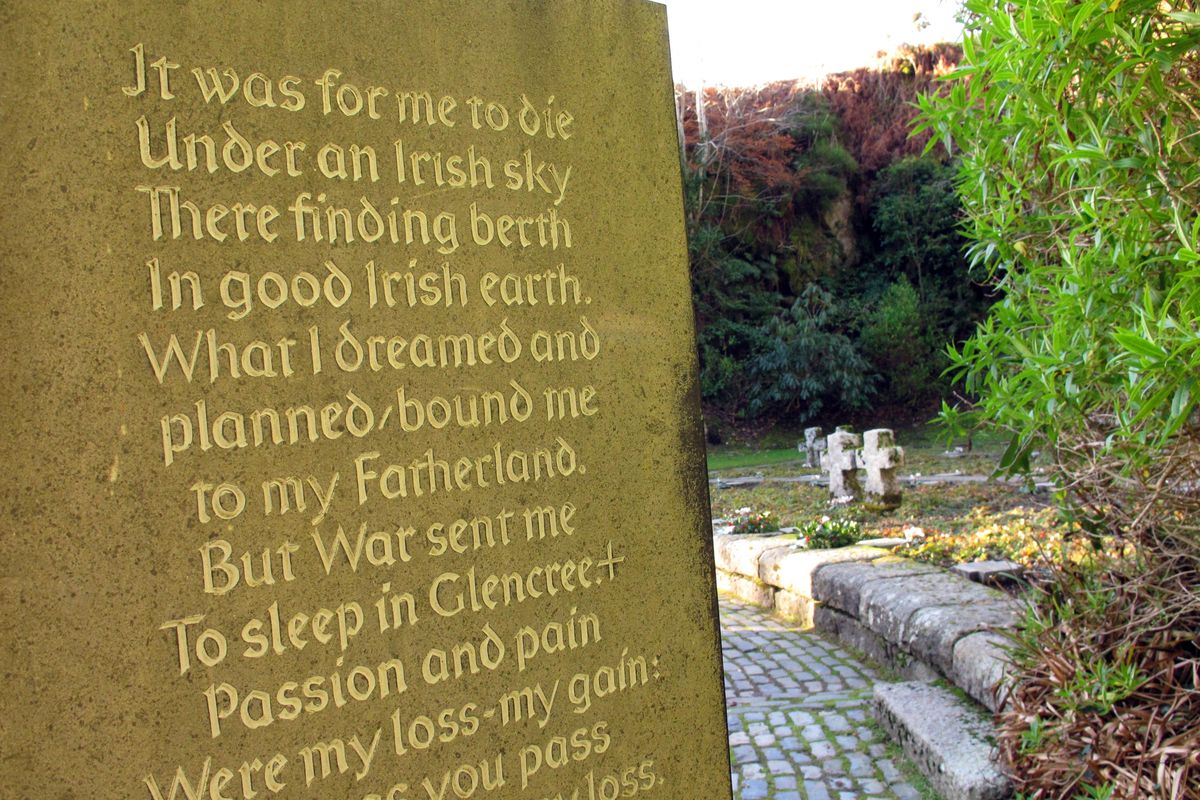Ireland’s County Wicklow: Wilderness and grand houses
The exterior of Powerscourt House in County Wicklow, Ireland. The 18th century estate has vast ornate gardens reminiscent of Versailles that were named among the most beautiful in the world by National Geographic magazine. A fire destroyed much of the interior of the house, but visitors can spend an entire day exploring the grounds _ over 47 acres of formal gardens, sweeping terraces, statues, ornamental lakes and trails. (Helen O’Neill Associated Press)
There is an eerie desolation to the beauty – lonely and lovely, no buildings or people, just bog cotton, heather and gorse, wild deer, sheep and wispy clouds that sweep in and envelop everything in a feathery mist. When my parents took us here as kids, we joked that we were driving up to heaven.
And yet “heaven” is just a short distance from Dublin. The mountains of County Wicklow offer some of the most spectacular scenery in the country. The wilderness is all the more startling because it is just 12 miles from the outskirts of Ireland’s capital city.
“You go from a civilized, secure and safe area to this wild open space in the middle of the elements on a road that leads to nowhere,” says Fred Verdier, a Frenchman who first saw Wicklow 12 years ago and now works for the local tourist board. “It is like nowhere else in the world, untouched and unspoiled, a little bit magical, a little bit scary.”
From Dublin’s outskirts south across the mountains, you can take the 36-mile Military Road, so named because the British army built it in the early 1800s to flush out insurgents hiding in the hills.
The mountains are home to all sorts of historical treasures, from a 5,000-year-old passage grave (an ancient stone burial chamber) at Seefin to an unusual and beautiful graveyard at Glencree for 134 German soldiers who died in Ireland during World Wars I and II.
Not far from the cemetery, but largely hidden from the road, is the famed Guinness family estate at Luggala, a turreted whitewashed lodge filled with art treasures and set on 6,000 acres between two lakes in a valley. Raucous parties here in the 1960s and 1970s drew celebrities from around the world. Today, Luggala is often rented by those trying to avoid the public eye (Michael Jackson and Tiger Woods both used it as a retreat) and by movie studios drawn to the county’s wilderness and beauty.
The hills have been used in movies as stand-ins for Scotland, England, France, Germany and other countries. Films shot here include “Ella Enchanted,” “Michael Collins,” “Dancing at Lughnasa,” “Excalibur,” “Braveheart” and “P.S. I Love You.” The tiny hamlet of Hollywood in the heart of Wicklow even has white letters spelling out its name in a sheep field above the town. Wicklow is also home to Ireland’s two film studios, where the History Channel’s “Vikings” series and Showtime’s “Penny Dreadful” are produced.
Down from the mountains, the county is dotted with picture-perfect villages as well as some of Ireland’s best preserved grand houses. Many of these Downton Abbey-type residences are open for tours (check websites for days and hours): Russborough House, a Palladian-style mansion built in the 1740s by a wealthy Dublin brewer and filled with antiques and paintings by Goya, Vermeer and Rubens; Killruddery house, built by the Earls of Meath in 1618, with gorgeous formal gardens, parks and walks; and Avondale House, the birthplace of 19th century nationalist leader Charles Stewart Parnell (dubbed the uncrowned king of Ireland for his role in fighting for home rule).
Wicklow is also known as “the garden of Ireland” and one of the most famous is at Powerscourt House, an 18th century estate with vast ornate gardens reminiscent of Versailles that were named among the most beautiful in the world by National Geographic. The great house was gutted by fire in 1974, but the stone exterior remains intact and the interior has been transformed into shops and a restaurant. Grounds include over 47 acres of gardens, terraces, statues, lakes, trails and a golf course.
At the far end of the county, and a world away from the elegance of Powerscourt, are the monastic ruins of Glendalough, considered one of Ireland’s greatest centers of learning for over 500 years. Set deep in a valley between two lakes, the settlement, founded by St. Kevin in the sixth century, evokes an almost mystical sense of the past. The site includes the remains of churches, monastic cells, monuments, Celtic crosses and a round tower that served as a sanctuary in times of attack. Tour guides offer tales of how the hermit saint rebuked female suitors, cast monsters into lakes and befriended blackbirds.
As the sun fades over the ruins and the Wicklow mountains loom In the distance, it’s easy to imagine the monks gathering for evening prayer, or the saint making his way to a small cave high above the upper lake to dine on a bowl of nettles and sleep on a bed of stones.







